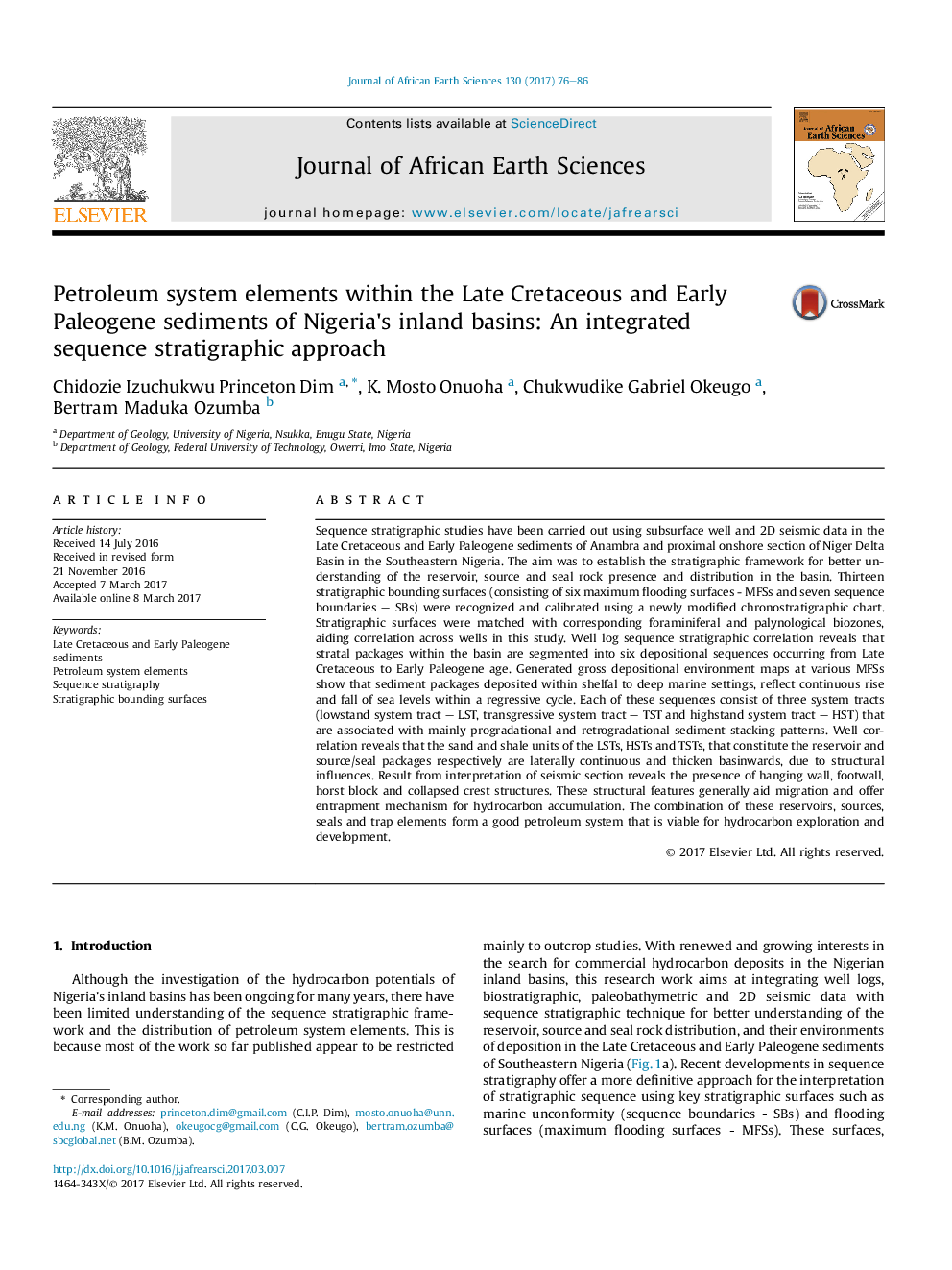| کد مقاله | کد نشریه | سال انتشار | مقاله انگلیسی | نسخه تمام متن |
|---|---|---|---|---|
| 5785462 | 1640178 | 2017 | 11 صفحه PDF | دانلود رایگان |
عنوان انگلیسی مقاله ISI
Petroleum system elements within the Late Cretaceous and Early Paleogene sediments of Nigeria's inland basins: An integrated sequence stratigraphic approach
ترجمه فارسی عنوان
عناصر سیستم های نفتی در رسوبات کرتاسه پس از زلزله و پالئوژن اولیه پهنه های دریایی نیجریه: رویکرد چینه شناسی ترکیبی
دانلود مقاله + سفارش ترجمه
دانلود مقاله ISI انگلیسی
رایگان برای ایرانیان
کلمات کلیدی
موضوعات مرتبط
مهندسی و علوم پایه
علوم زمین و سیارات
زمین شناسی
چکیده انگلیسی
Sequence stratigraphic studies have been carried out using subsurface well and 2D seismic data in the Late Cretaceous and Early Paleogene sediments of Anambra and proximal onshore section of Niger Delta Basin in the Southeastern Nigeria. The aim was to establish the stratigraphic framework for better understanding of the reservoir, source and seal rock presence and distribution in the basin. Thirteen stratigraphic bounding surfaces (consisting of six maximum flooding surfaces - MFSs and seven sequence boundaries - SBs) were recognized and calibrated using a newly modified chronostratigraphic chart. Stratigraphic surfaces were matched with corresponding foraminiferal and palynological biozones, aiding correlation across wells in this study. Well log sequence stratigraphic correlation reveals that stratal packages within the basin are segmented into six depositional sequences occurring from Late Cretaceous to Early Paleogene age. Generated gross depositional environment maps at various MFSs show that sediment packages deposited within shelfal to deep marine settings, reflect continuous rise and fall of sea levels within a regressive cycle. Each of these sequences consist of three system tracts (lowstand system tract - LST, transgressive system tract - TST and highstand system tract - HST) that are associated with mainly progradational and retrogradational sediment stacking patterns. Well correlation reveals that the sand and shale units of the LSTs, HSTs and TSTs, that constitute the reservoir and source/seal packages respectively are laterally continuous and thicken basinwards, due to structural influences. Result from interpretation of seismic section reveals the presence of hanging wall, footwall, horst block and collapsed crest structures. These structural features generally aid migration and offer entrapment mechanism for hydrocarbon accumulation. The combination of these reservoirs, sources, seals and trap elements form a good petroleum system that is viable for hydrocarbon exploration and development.
ناشر
Database: Elsevier - ScienceDirect (ساینس دایرکت)
Journal: Journal of African Earth Sciences - Volume 130, June 2017, Pages 76-86
Journal: Journal of African Earth Sciences - Volume 130, June 2017, Pages 76-86
نویسندگان
Chidozie Izuchukwu Princeton Dim, K. Mosto Onuoha, Chukwudike Gabriel Okeugo, Bertram Maduka Ozumba,
